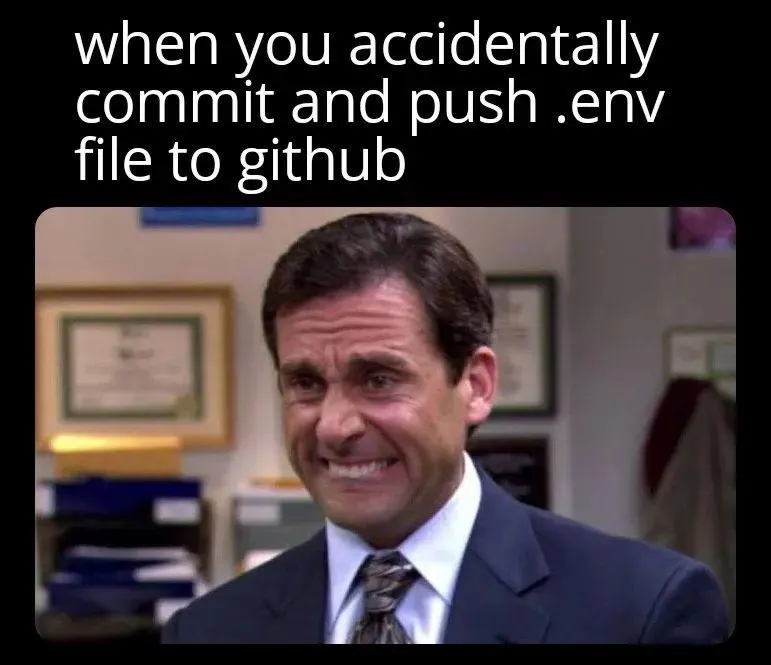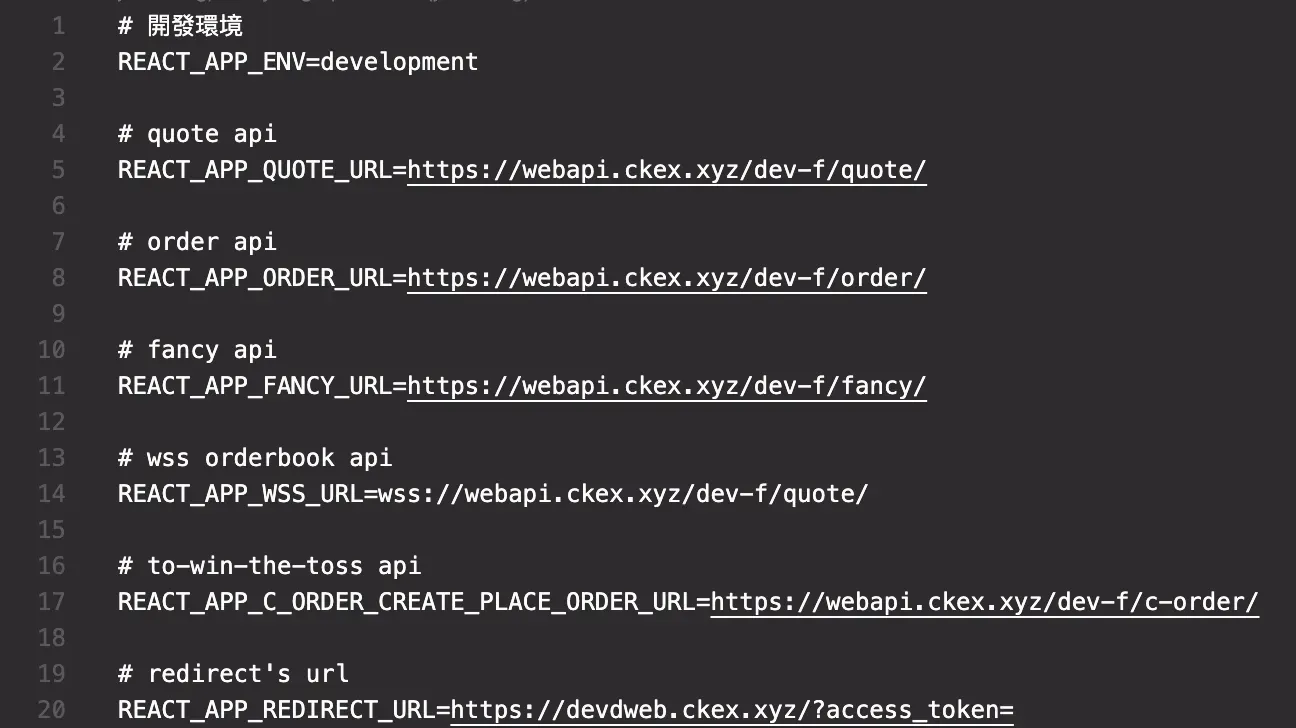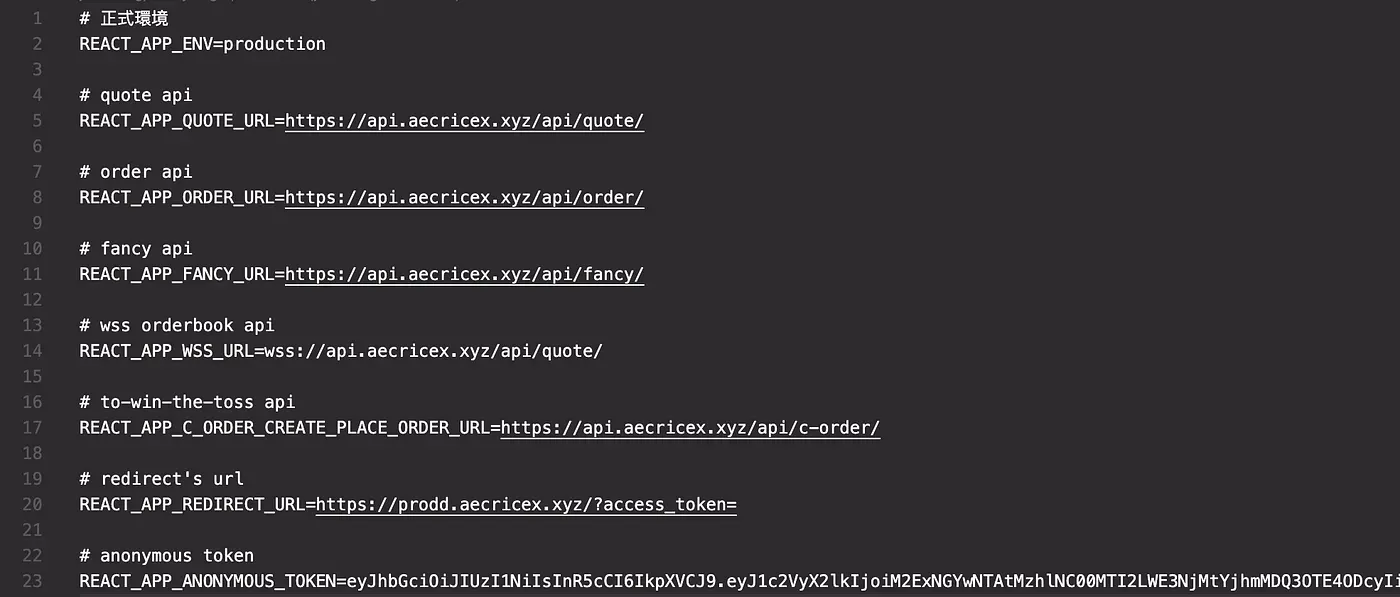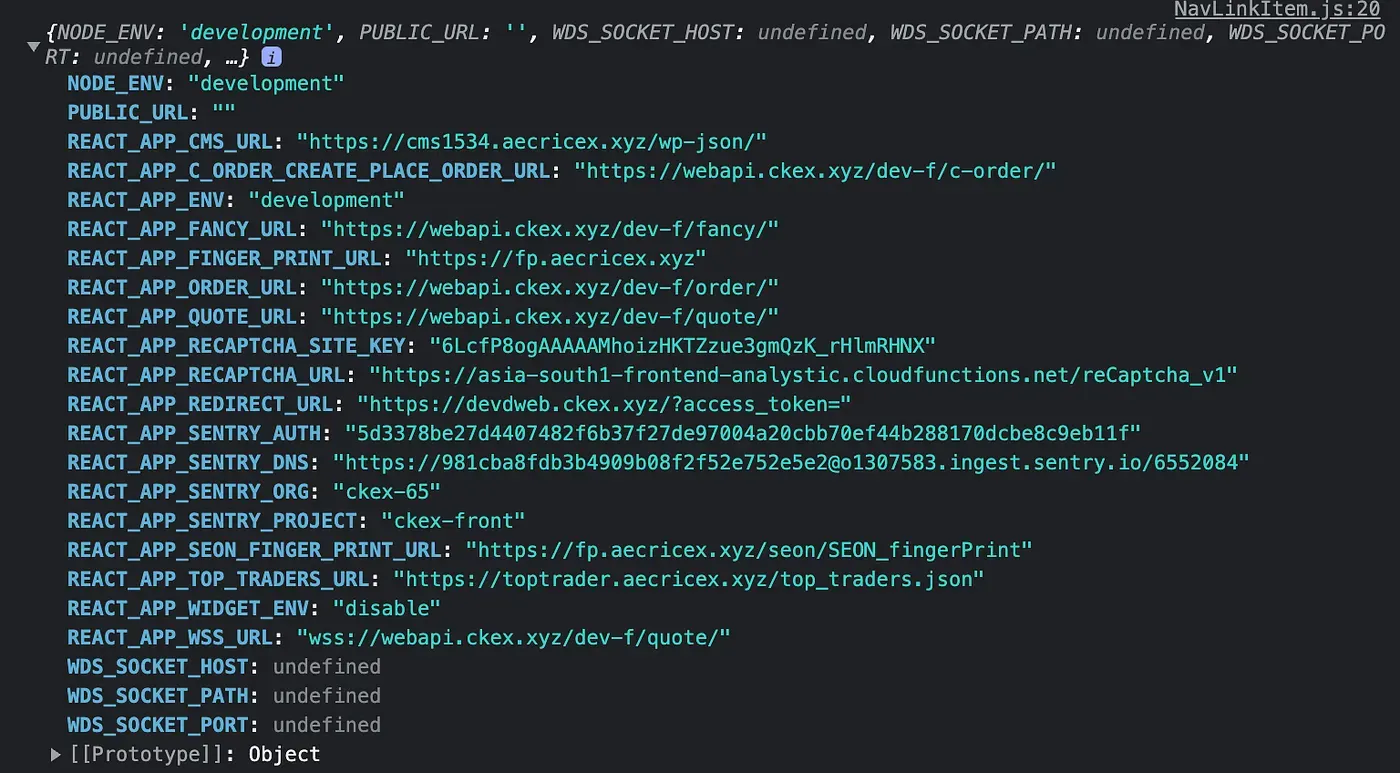React multi-environment build and development

by Hsuan Huang
In development, when dealing with multiple environment APIs (development, staging, production, etc.), the order of .env file resolution and how to write scripts.
In real project development, the frontend often needs to handle multiple environment APIs. This is something you rarely encounter when doing a side project, since you usually only have a single local development environment.
In actual projects, however, you may have environments such as development, staging/testing, and production. Along with these environments, their corresponding baseURLs must change depending on the environment.
How do we make these changes?
Generally, we use scaffolding tools like Create React App to set up a project. The advantage is convenience — it takes care of many things you don’t see (e.g., webpack). The downside is that when you want to change these configurations, it becomes more troublesome. So, without ejecting, how should we configure multi-environment development?
Let’s first take a look at the Create React App official documentation on multi-environment builds — it’s actually explained quite clearly.
.env: Default..env.local: Local overrides. This file is loaded for all environments except test..env.development,.env.test,.env.production: Environment-specific settings..env.development.local,.env.test.local,.env.production.local: Local overrides of environment-specific settings.
Here we’ll just paste part of the official documentation directly, so no translation is really needed.
We usually use three commands: **npm start**, **npm run build**, and **npm test** for previewing, building, and testing.
When running different commands, different environment configuration files will be picked up. The order of precedence is as follows — the ones on the left have higher priority than those on the right.
npm start:.env.development.local,.env.local,.env.development,.envnpm run build:.env.production.local,.env.local,.env.production,.envnpm test:.env.test.local,.env.test,.env(note .env.local is missing)
Let’s take an example

In our package.json, you can see there’s more than one environment. For example, start:prod is meant to preview the production environment. However, when running the **start** command, it defaults to loading variables from the **.env.development** file.
Obviously, that’s not what I want. I want it to load variables from .env.production, so I need the help of the dotenv package.
This is also the solution given in the official documentation — you can use dotenv to manage environment variables (dotenv loads variables from a .env file into process.env).
P.s. : According to Create React App’s official documentation, running the start command defaults to loading variables from .env.development, while running the build command defaults to loading variables from .env.production.
Next, let’s do it.
- First, create the related
**.env**files in the root directory.

- Write the variables inside the files.
Variable names must start with REACT_APP, use uppercase letters, and separate words with underscores. After changing .env variable names, the project must be restarted for the changes to take effect.


The above are the variables for the development and production environments, respectively.
- Install the
**dotenv-cli**plugin.
_yarn add dotenv-cli or npm i dotenv-cli_
- Write the script
Open package.json; almost all configuration-related content can be found here.

You can see that "start:prod": "dotenv -e .env.production node scripts/start.js" is configured to load environment variables from .env.production when running npm run start:prod, which achieves our goal.
At this point, the setup is basically complete. You can add or remove .env files and variables according to your project needs, and write scripts that match each environment.
Essentially, it all comes down to creating different **_.env_** files for each environment and writing corresponding scripts to load them.
Below are some additional notes.
How to access the variables
You can access the variables via process.env.

process represents a process, which can be understood as the fact that a CPU executes only one process at a time. We can use the process object to access all environment information, including JS script threads, HTTP threads, and more.
In other words, in a Node environment, we can use process to get current global information. For example:
process.initgroups: user informationprocess.execPath: absolute path of the Node executableprocess.env: the object containing user environment variables
Reference: